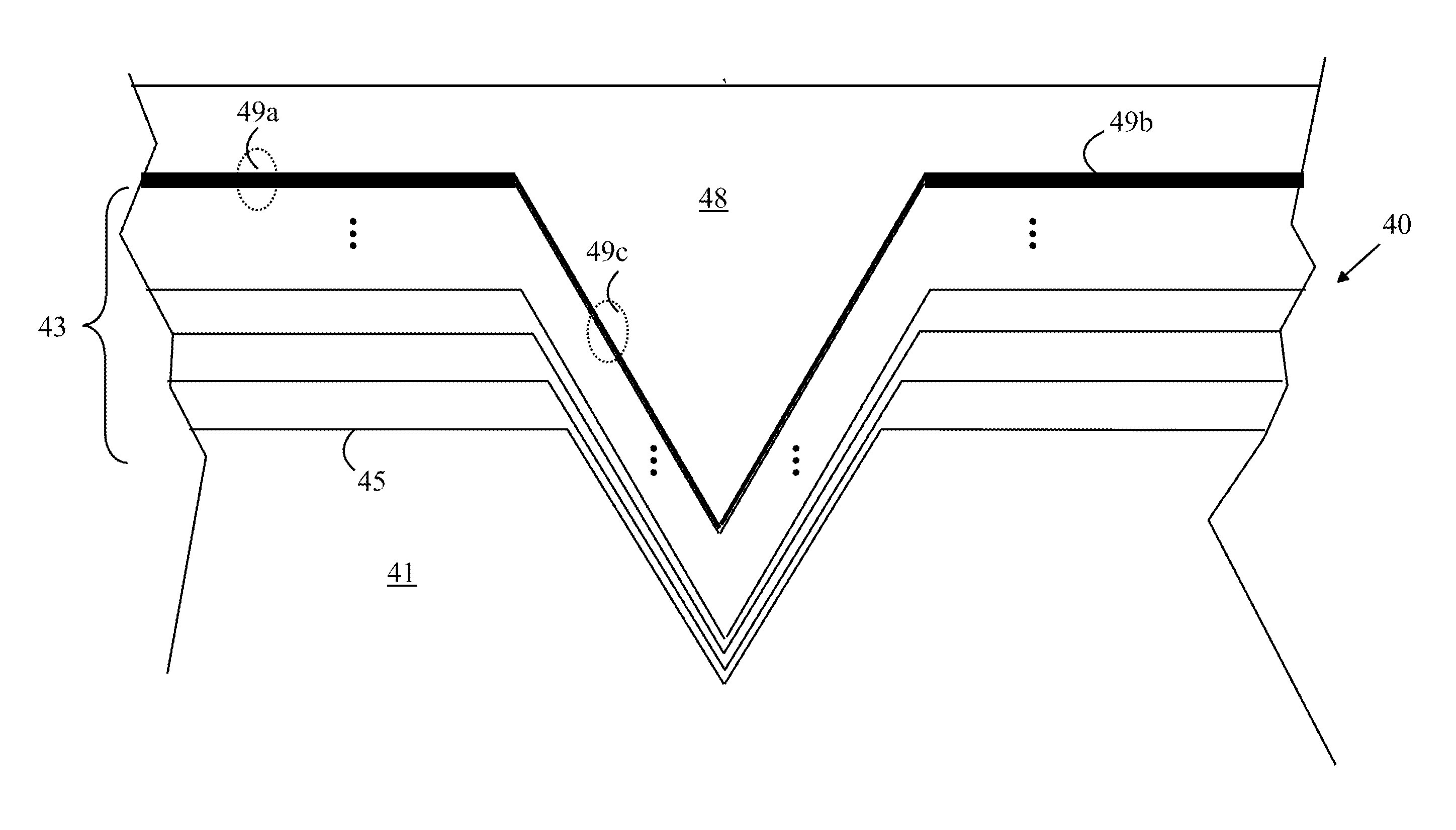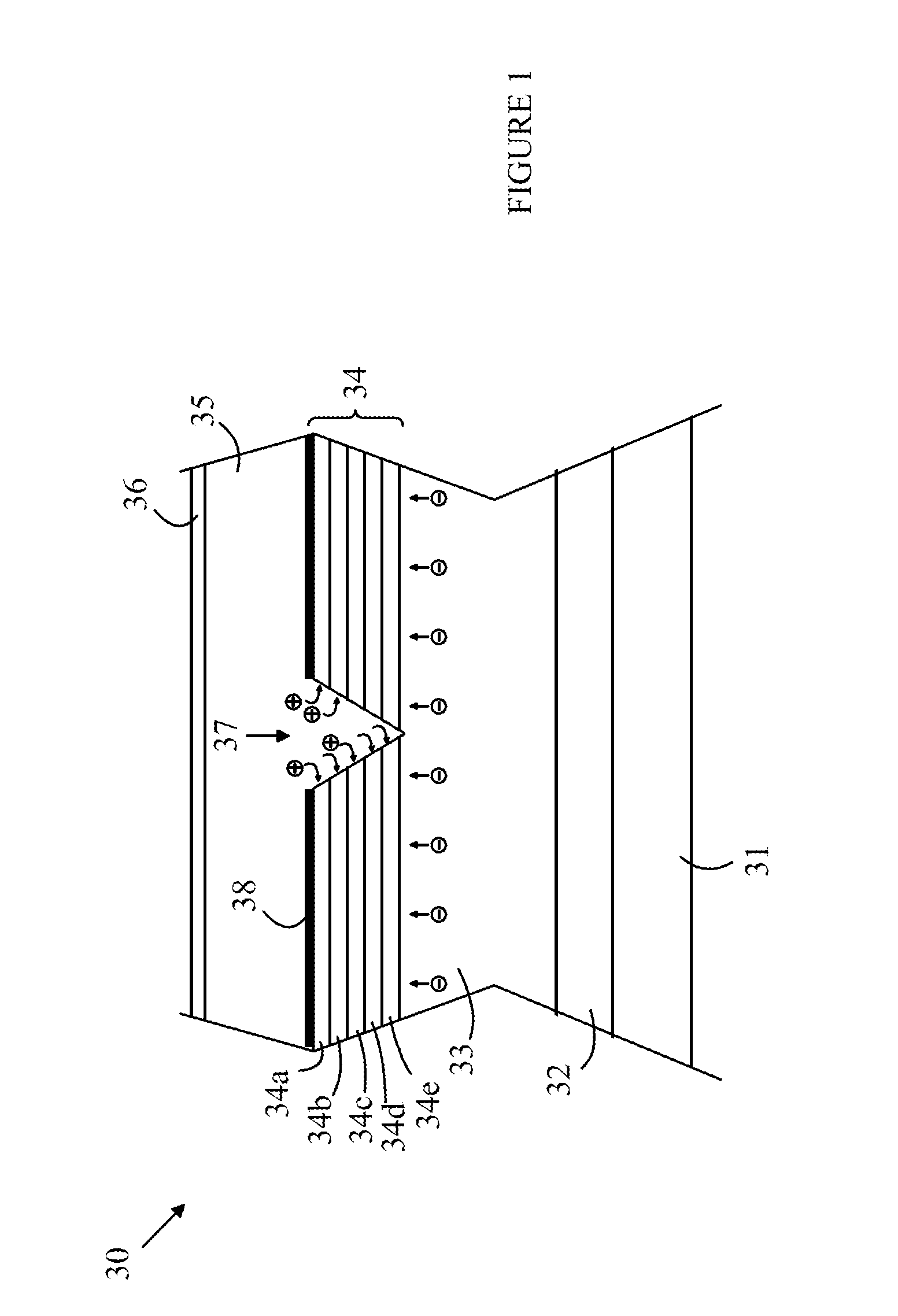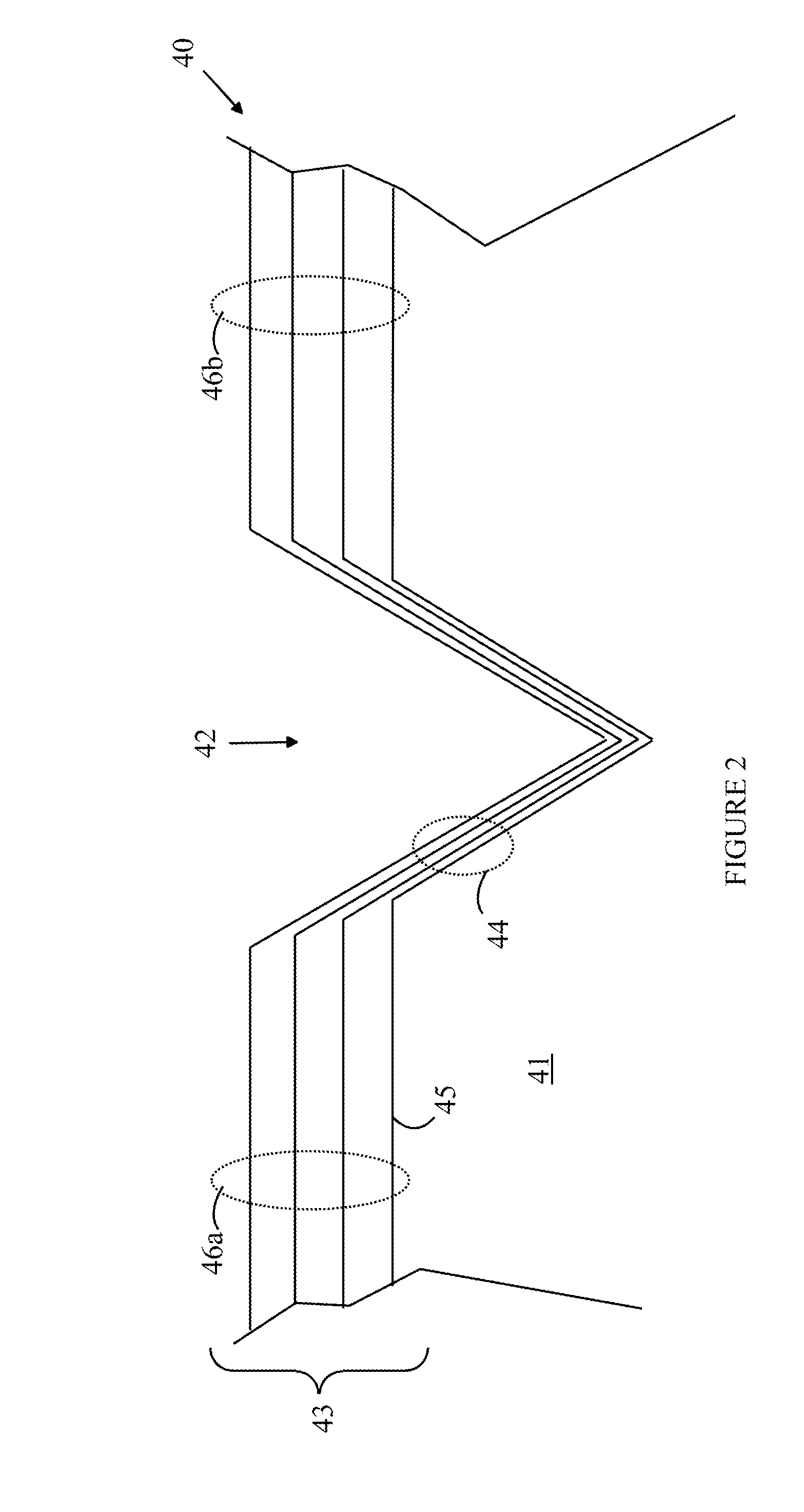LED with Improved Injection Efficiency
a technology of injection efficiency and leds, applied in the field of lightemitting diodes, can solve the problems of increasing the cost of light sources, increasing the cost of leds, and limiting the power level at which leds opera
- Summary
- Abstract
- Description
- Claims
- Application Information
AI Technical Summary
Benefits of technology
Problems solved by technology
Method used
Image
Examples
Embodiment Construction
[0018]The manner in which the present invention provides its advantages can be more easily understood with reference to FIG. 1, which is a cross-sectional view of a portion of an ideal LED 30 that has significantly improved hole injection efficiency and an electron blocking layer without substantially increasing the driving voltage of the LED. LED 30 is fabricated on a substrate 31 by epitaxially growing a number of layers on substrate 31. The layers include a buffer layer 32, an n-type cladding layer 33, an active layer 34, and a p-type cladding layer 35. A current spreading layer 36 is optionally deposited on the p-cladding layer. Active layer 34 includes a number of sub-layers 34a-34e. To simplify the following discussion, sub-layer 34a will be referred to as the top-most sub-layer; however, this is merely a convenient label and does not imply any particular orientation relative to the earth. Active layer 34 also includes a number of “pits”37 that extend through the sub-layers of...
PUM
 Login to View More
Login to View More Abstract
Description
Claims
Application Information
 Login to View More
Login to View More - R&D
- Intellectual Property
- Life Sciences
- Materials
- Tech Scout
- Unparalleled Data Quality
- Higher Quality Content
- 60% Fewer Hallucinations
Browse by: Latest US Patents, China's latest patents, Technical Efficacy Thesaurus, Application Domain, Technology Topic, Popular Technical Reports.
© 2025 PatSnap. All rights reserved.Legal|Privacy policy|Modern Slavery Act Transparency Statement|Sitemap|About US| Contact US: help@patsnap.com



